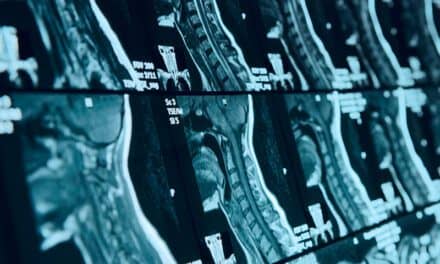Researchers at the University of Illinois Urbana-Champaign have developed a dual-modality imaging technique that not only delivers comprehensive diagnostic information but also provides a cost-effective solution for healthcare providers. Ultrasound is a widely employed diagnostic tool, although it’s limited by low image quality and must often be paired with more expensive imaging methods, like MRI.
To enhance ultrasound imaging, electrical and computer engineering (ECE) assistant professors Yun-Sheng Chen and Yang Zhao, along with ECE graduate student Shensheng Zhao, integrated photoacoustic (PA) imaging, super-resolution ultrasound imaging, and a sparsity-constrained optimization method to create a dual-modality, super-resolution medical imaging technique. Zhao highlights that this new imaging tool features “more accessibility, portability, and cost-effectiveness. This technique is significantly cheaper than clinical medical imaging techniques, while providing similar functions.”
Traditional imaging techniques are most effective at identifying diseases when a patient exhibits structural changes in their organs. Unfortunately, by the time these changes become apparent, the disease has often progressed to an advanced stage. To address this shortcoming, the researchers aimed to develop a more comprehensive imaging technique capable of detecting additional physiological and biochemical abnormalities like changes in blood flow and tissue oxygenation.
By incorporating two emerging ultrasound-based imaging approaches, the team hopes to facilitate earlier disease detection, potentially improving patient outcomes and prognosis. Photoacoustic imaging is a technique that utilizes light from a laser pulse, which is absorbed by tissues in the body, generating ultrasound signals that produce images. Interestingly, each tissue exhibits a unique signature after interacting with the light, allowing both the structure and content of the tissue to be identified.
PA imaging can visualize physiological and biochemical processes within the body, such as blood oxygen content, tissue composition, inflammation, and the distribution of imaging agents (functional information). Despite the strengths of PA imaging, it does also have its limitations- its resolution is restricted, rendering it unable to resolve fine structures like microvasculature, which are crucial targets in various diseases, including cancer and kidney disease.
Moreover, super-resolution ultrasound imaging employs microbubbles as contrast agents that flow in the bloodstream and produce very strong ultrasound signals. Combining super-resolution ultrasound with PA imaging may sound straightforward, but each technique has its own hardware requirements and acquisition speeds, researchers say. Differing acquisition speeds are particularly important, as patients’ natural movements, such as their breathing and heartbeat, can cause the imaged information to shift over time.
Application of sparsity-constrained optimization to the signal processing aligned the speed of the two imaging techniques, enabling a smooth scan of the imaging area, the University of Illinois Urbana-Champaign team found. This approach allowed them to accelerate the frame rate of super-resolution ultrasound imaging by up to 37 times with synthetic data and 28 times with in vivo data. The matched imaging speeds enable interleaved recording of the two imaging types, allowing successful co-registration of chemical composition, blood flow, and structure.
The research team demonstrated their groundbreaking technique in two critical in vivo scenarios: lymph nodes and kidneys. The lymph nodes are among one of the first places cancer will metastasize, and doctors will check a patient’s lymph nodes to determine if a lymphadenectomy is necessary.
For this process, it’s important to know where the lymph node is and visualize the complex vasculature surrounding the cancer cells. With current techniques, either the vasculature can be seen, or the lymph node can be located, but not both. This new technique has shown that it can provide information on both the lymph node location and vasculature.
Chen highlights that “the main benefit of this imaging is that it can provide multi-dimensional information. We can add different layers of imaging. One layer can be structural, and another layer can be functional.” In the future, they aim to incorporate yet another layer—molecular information—to observe changes at the molecular or even genetic level, where most diseases occur.






